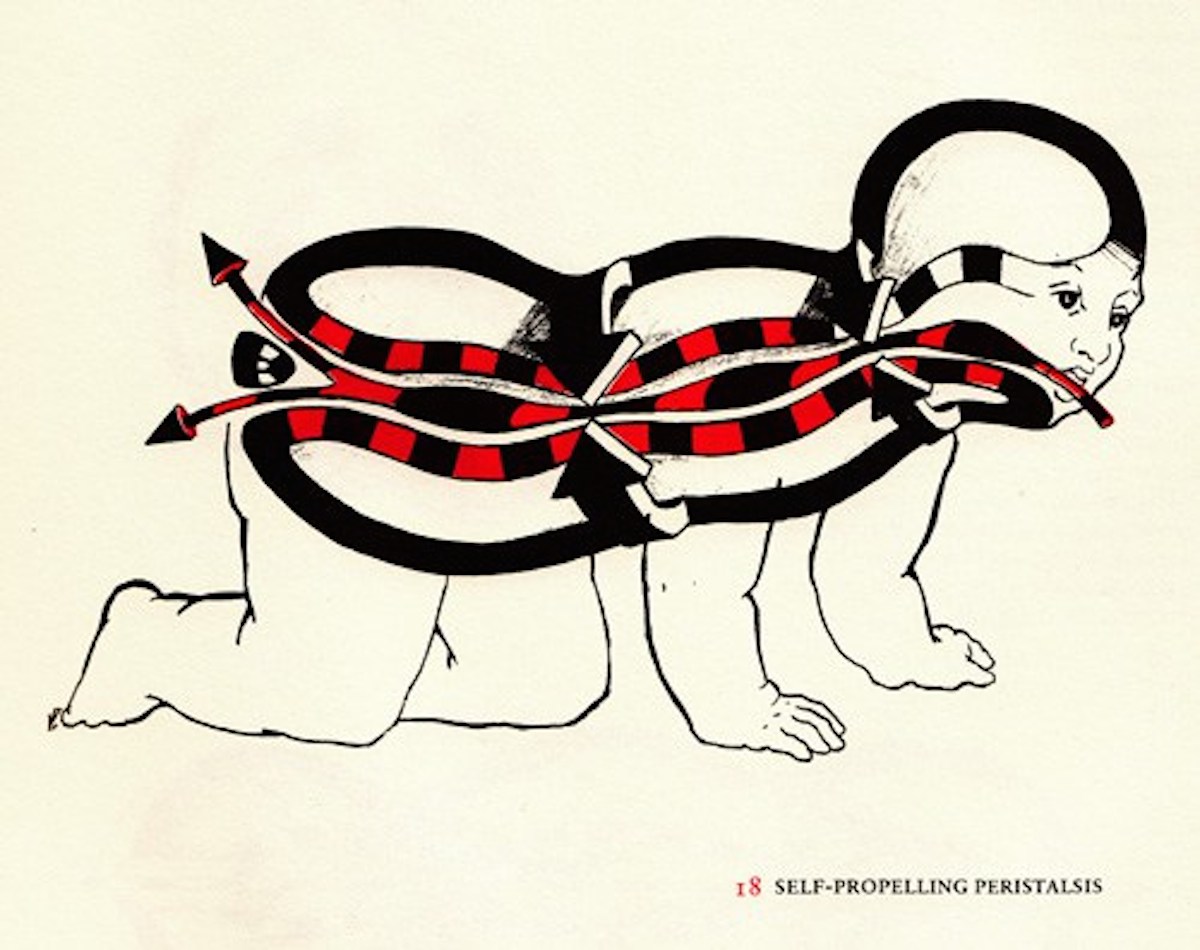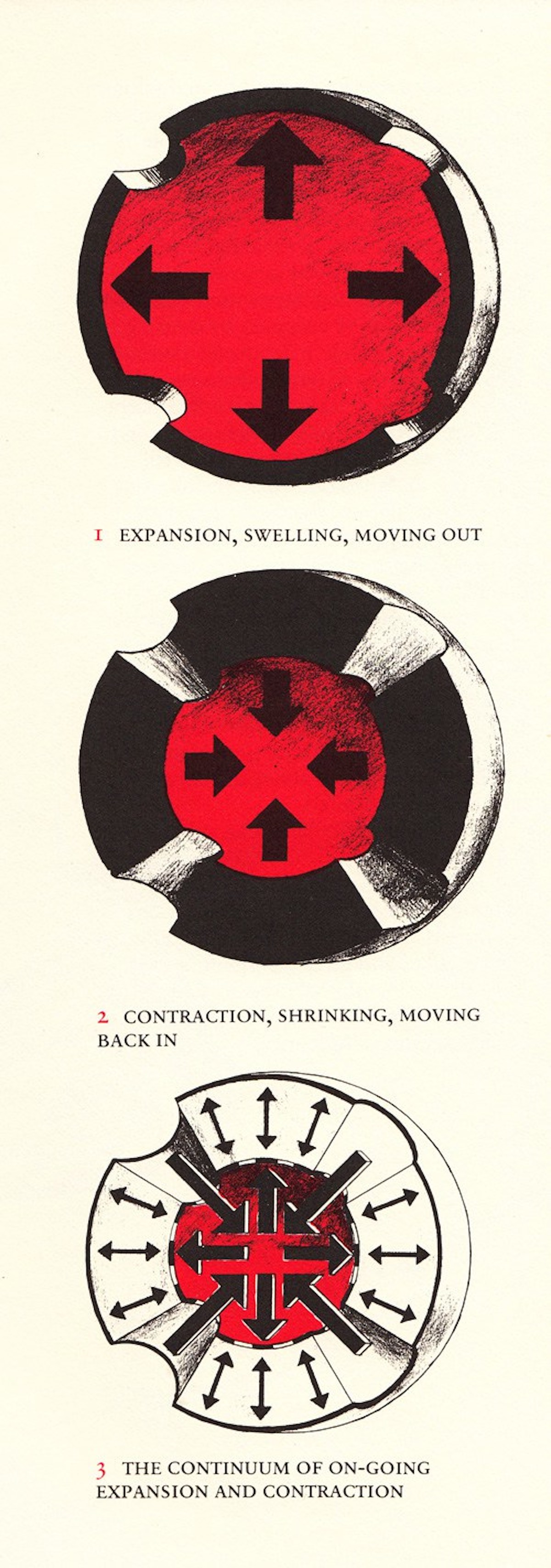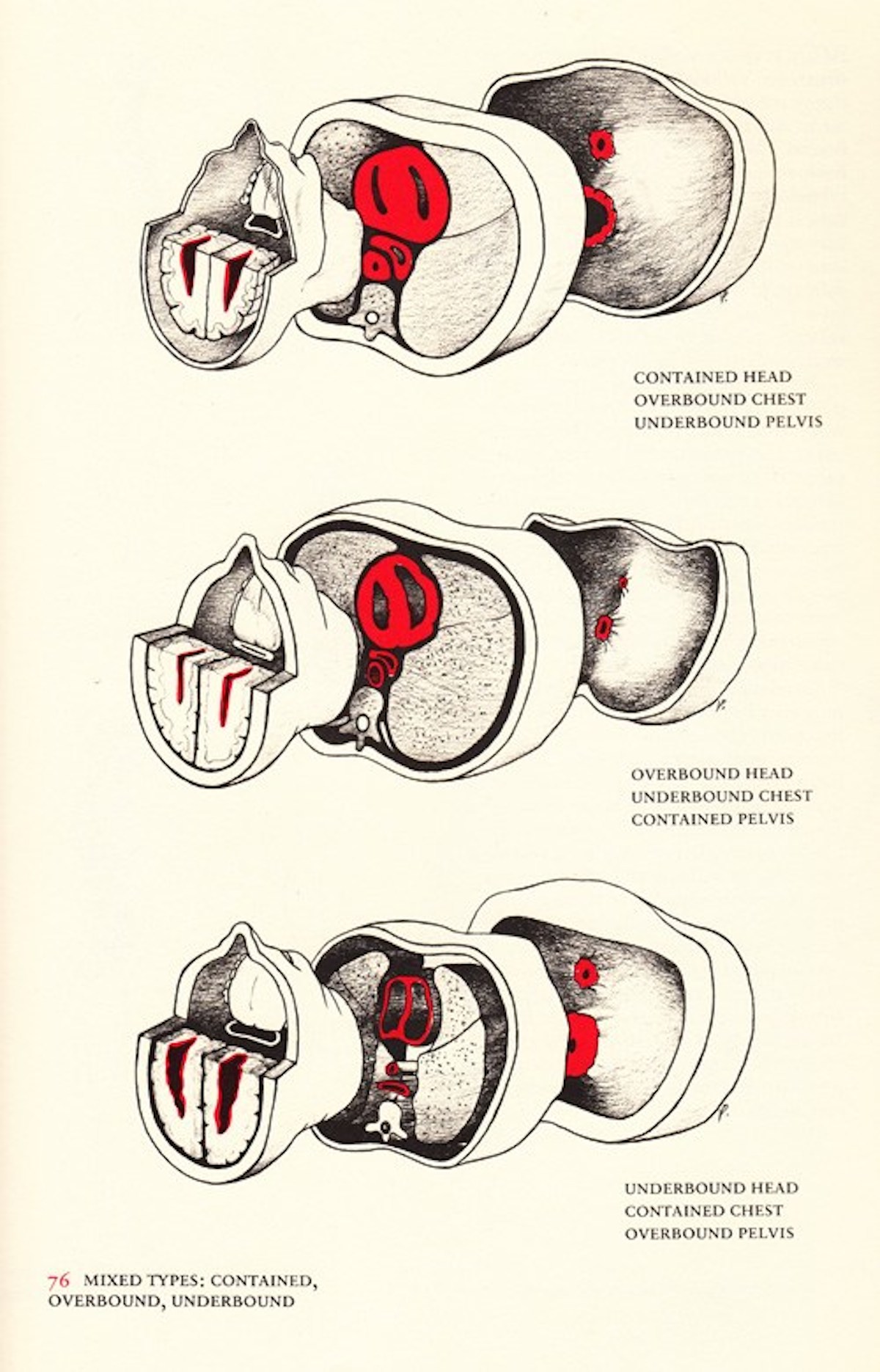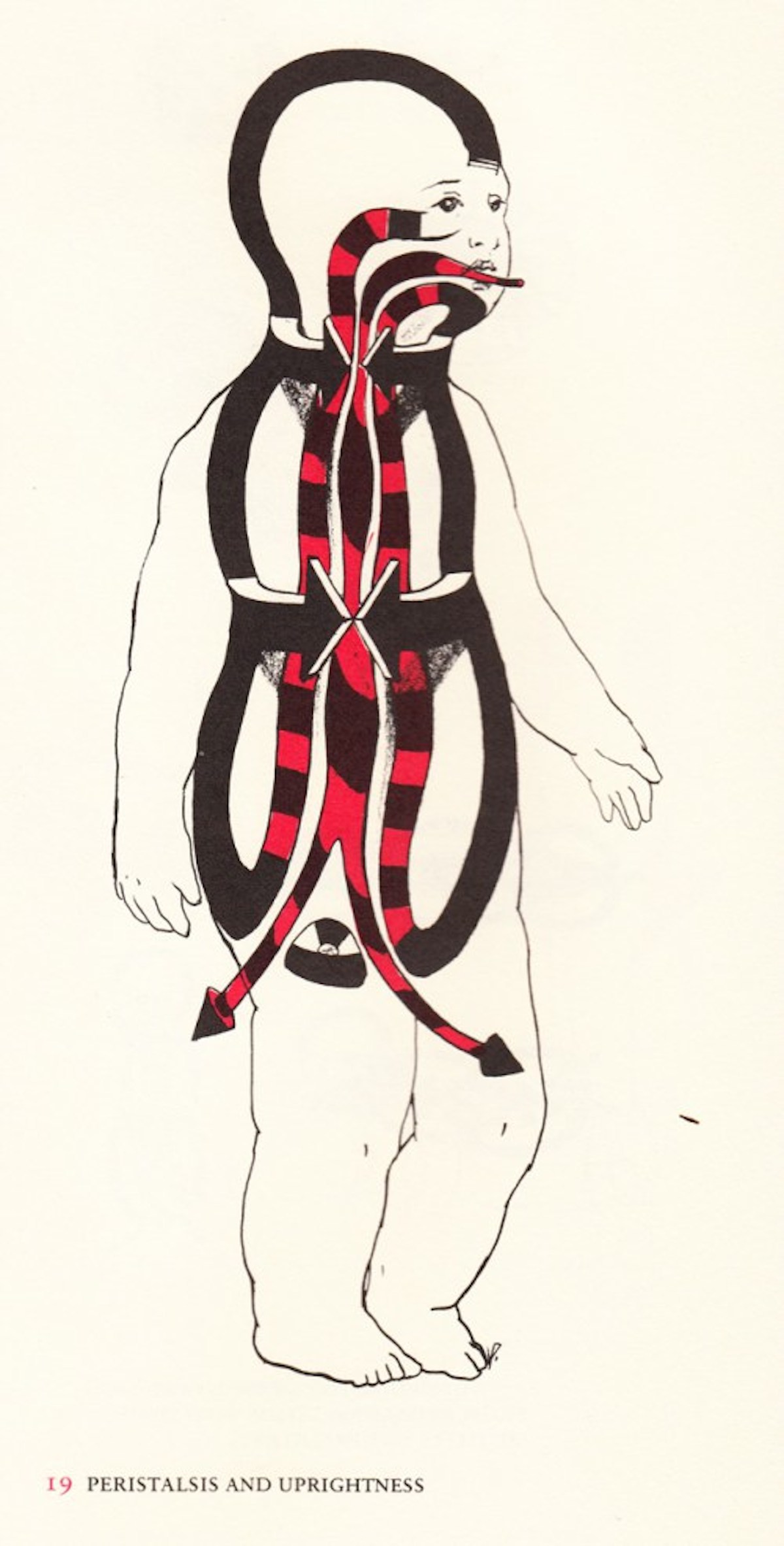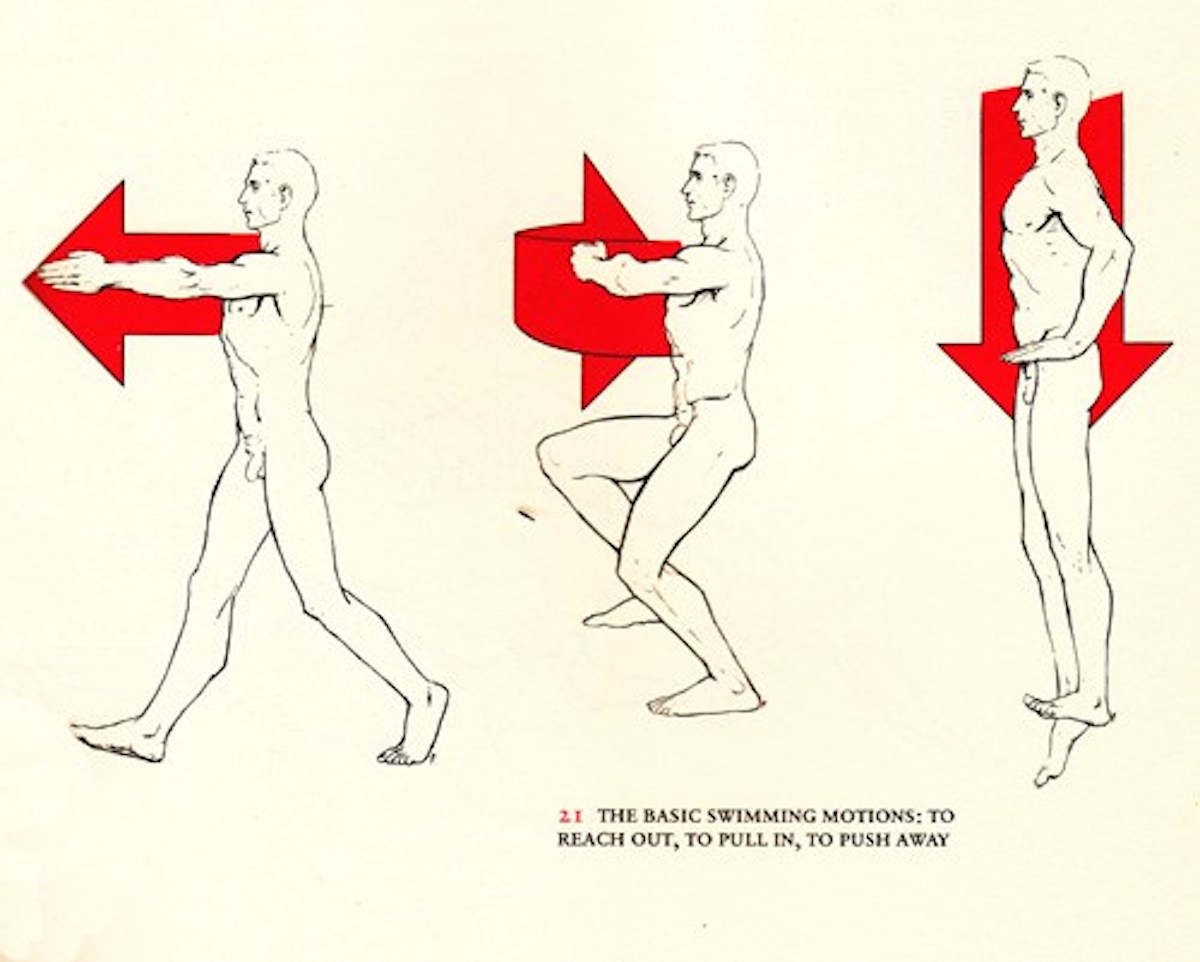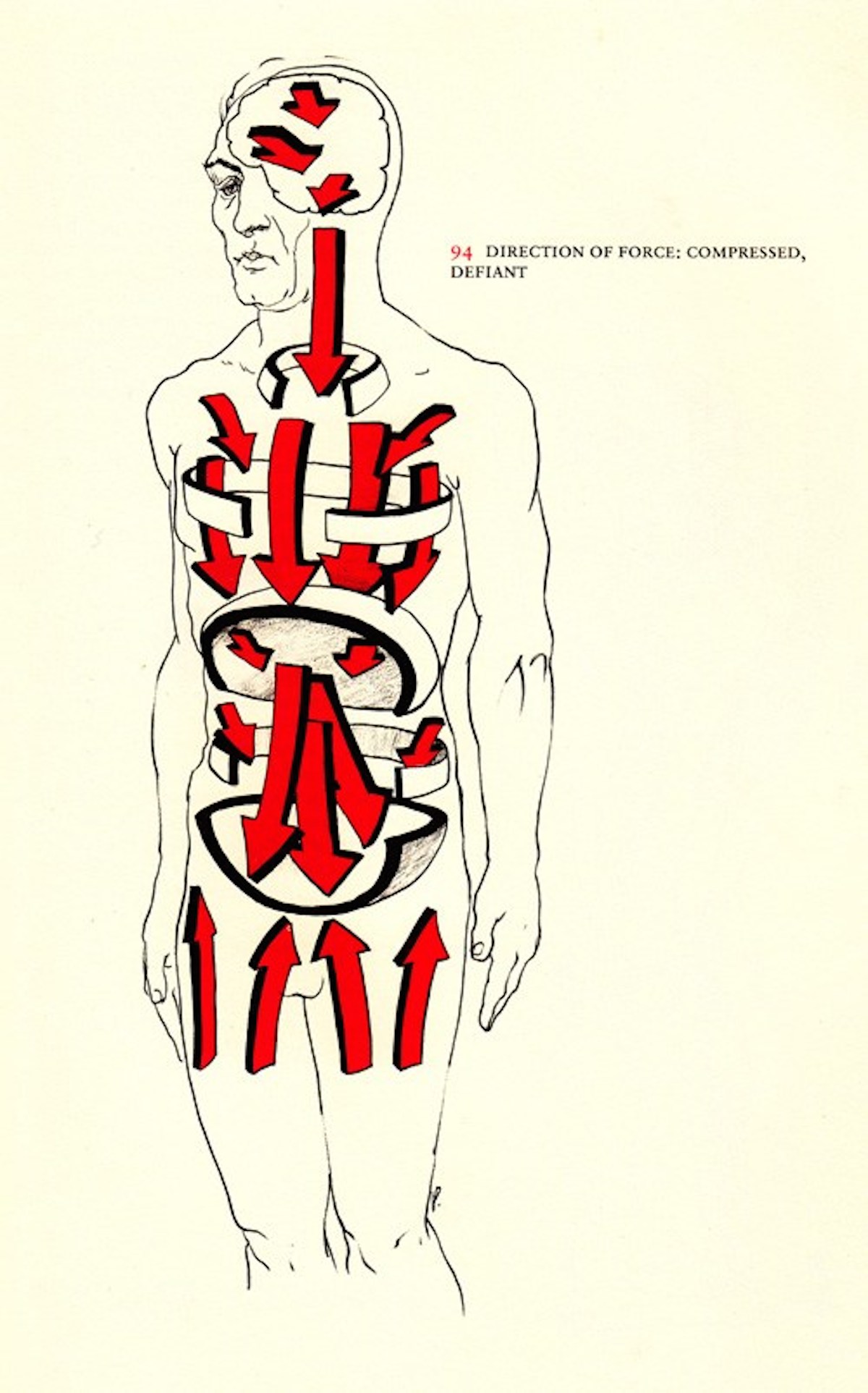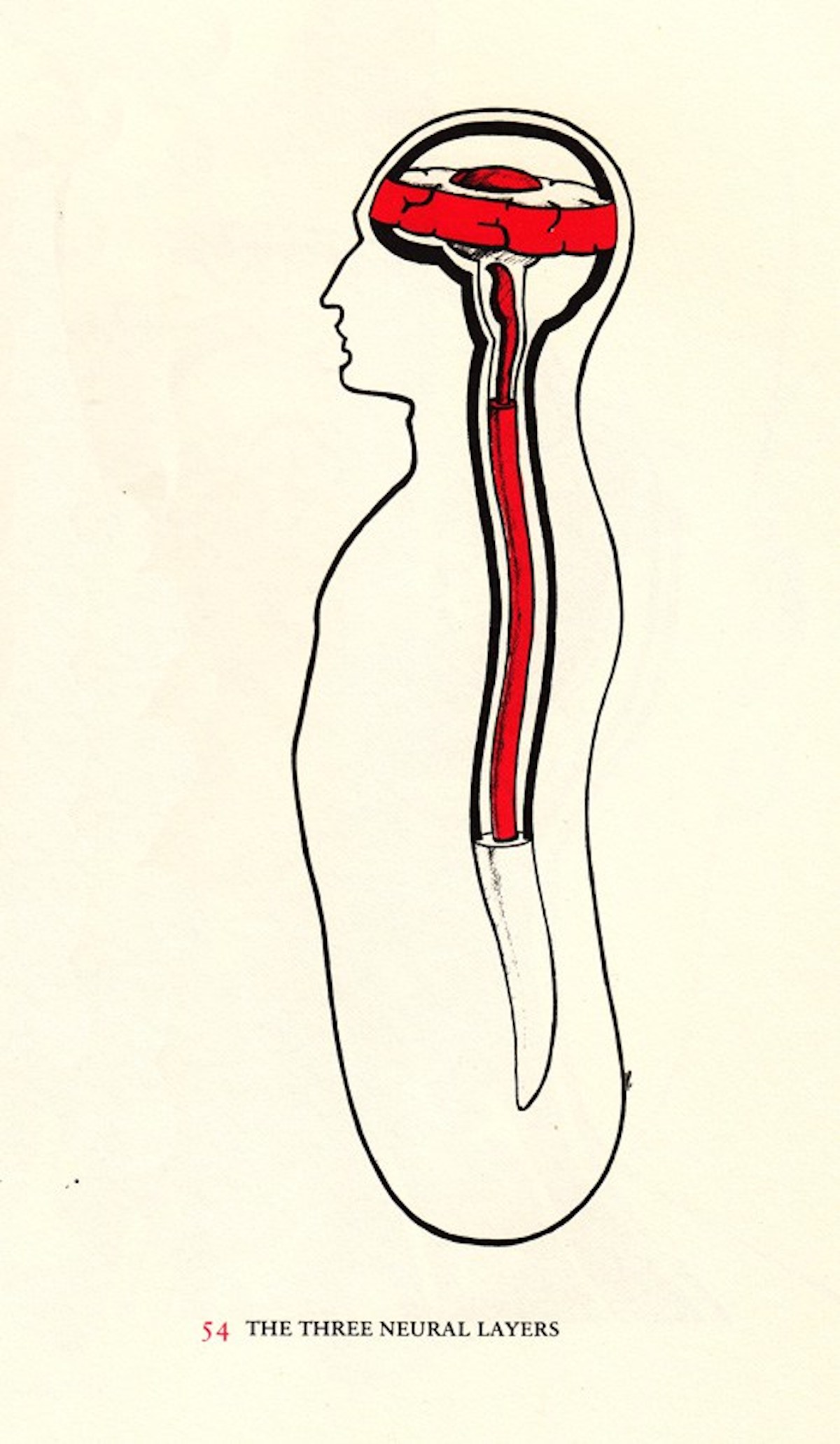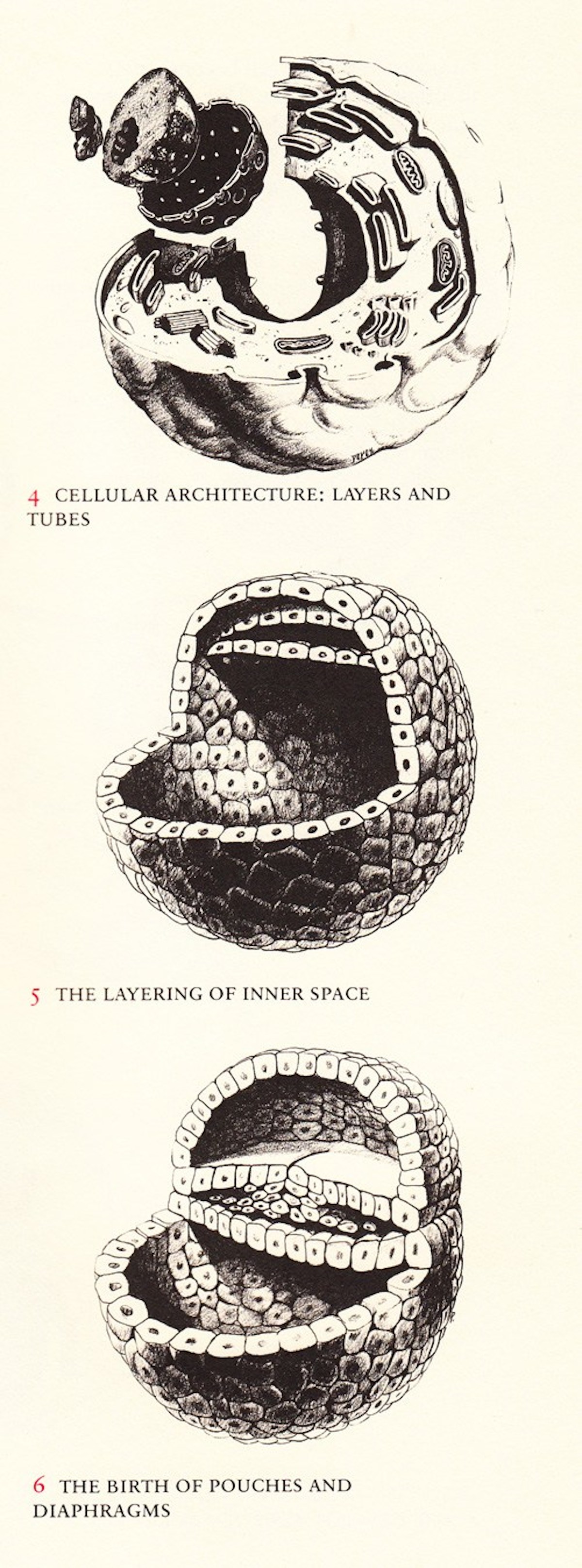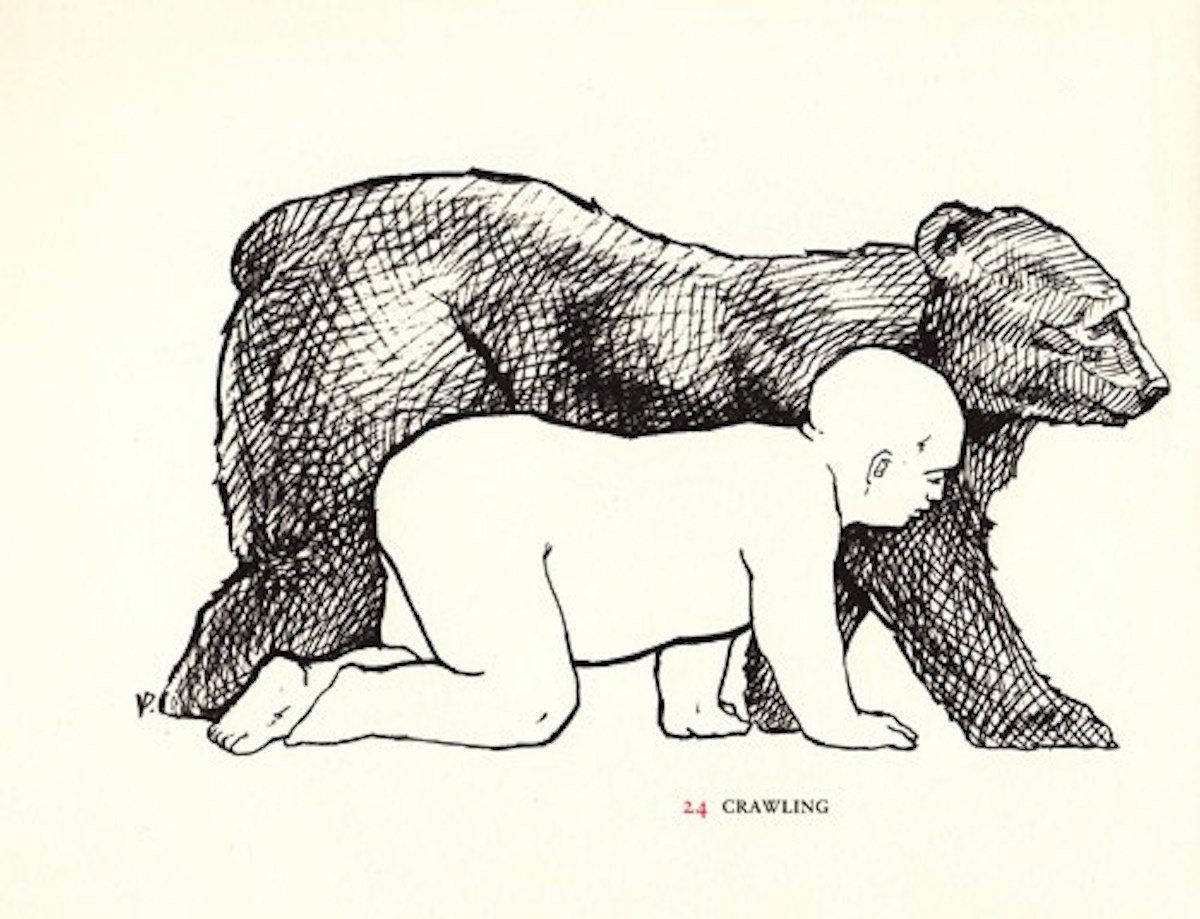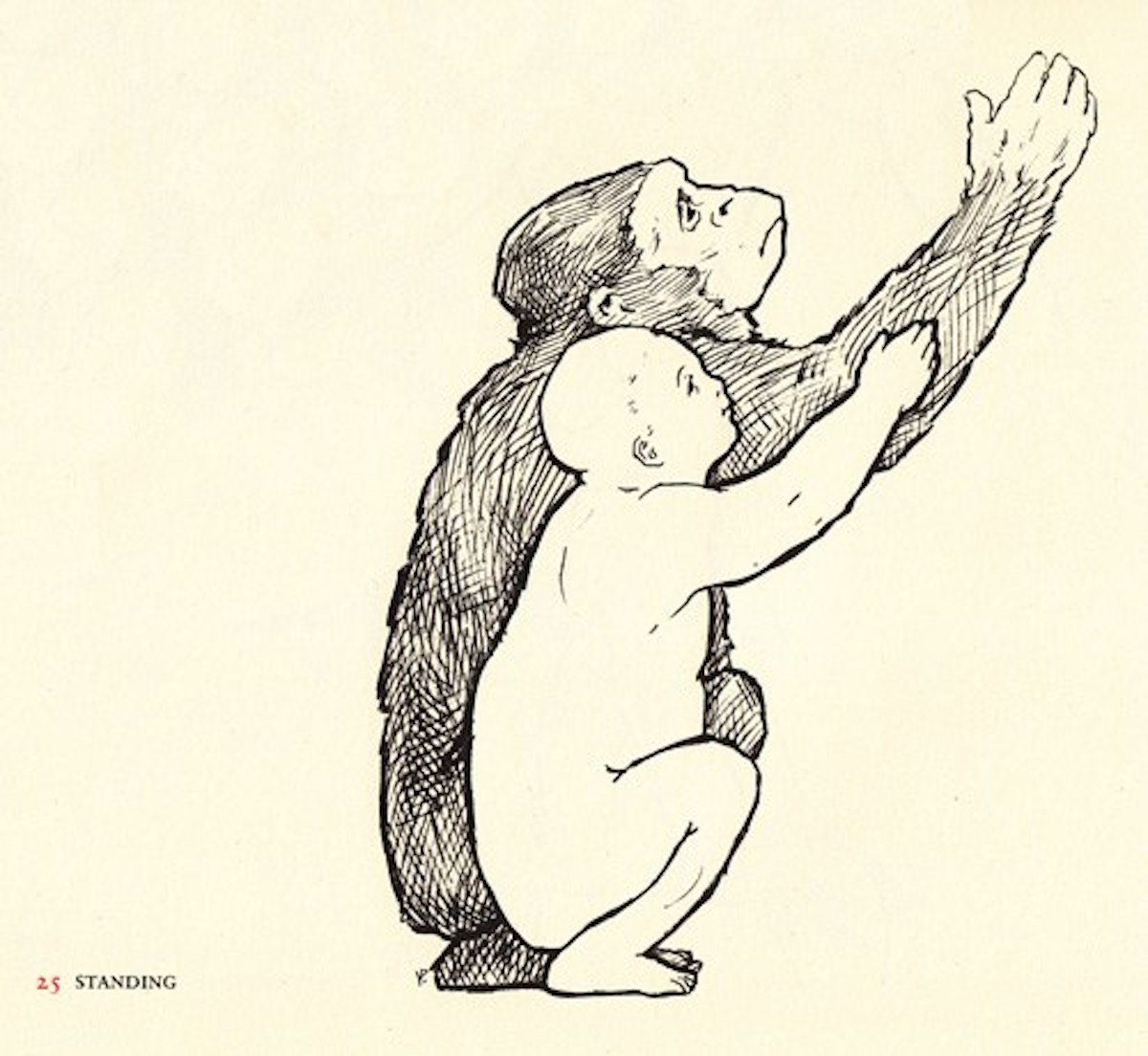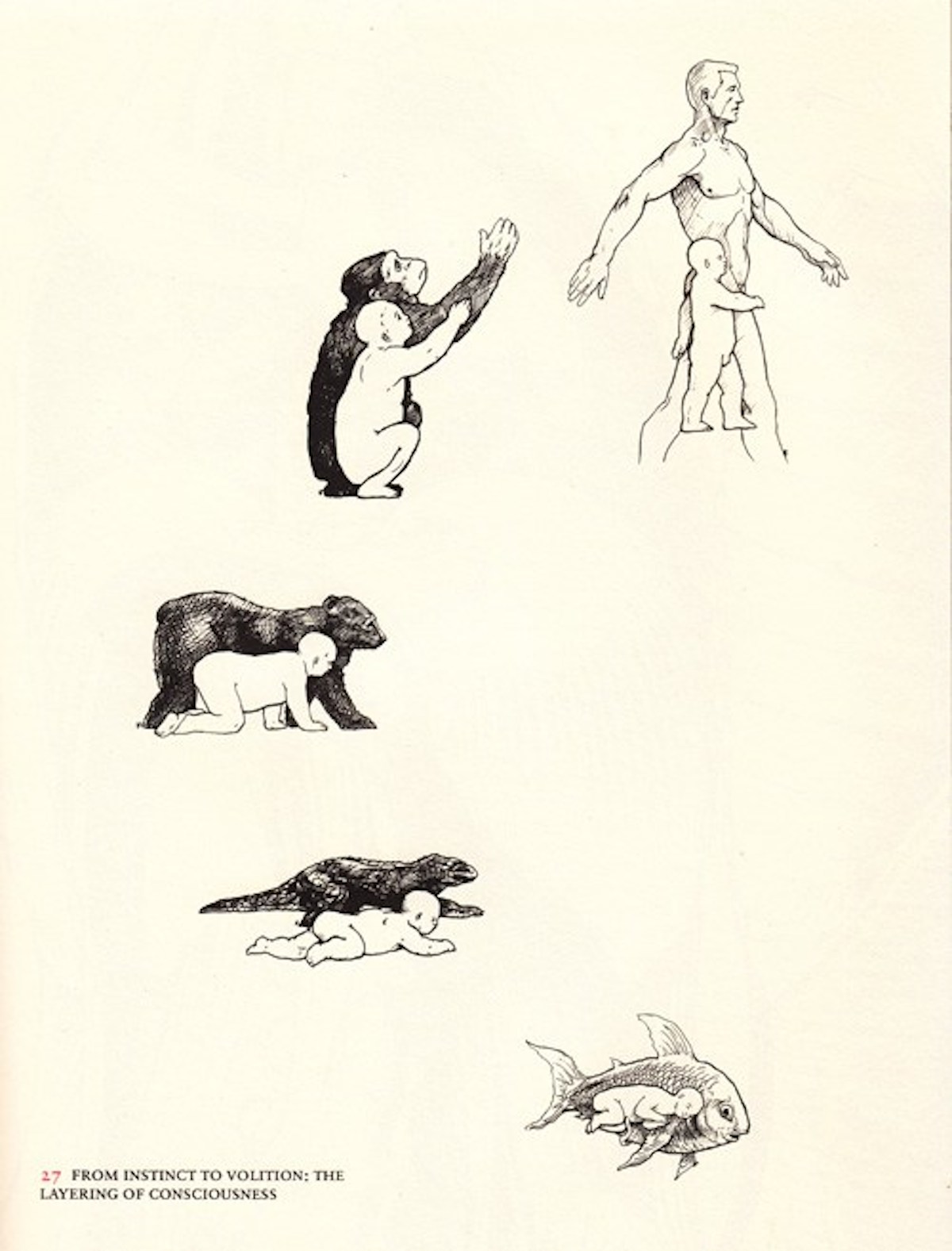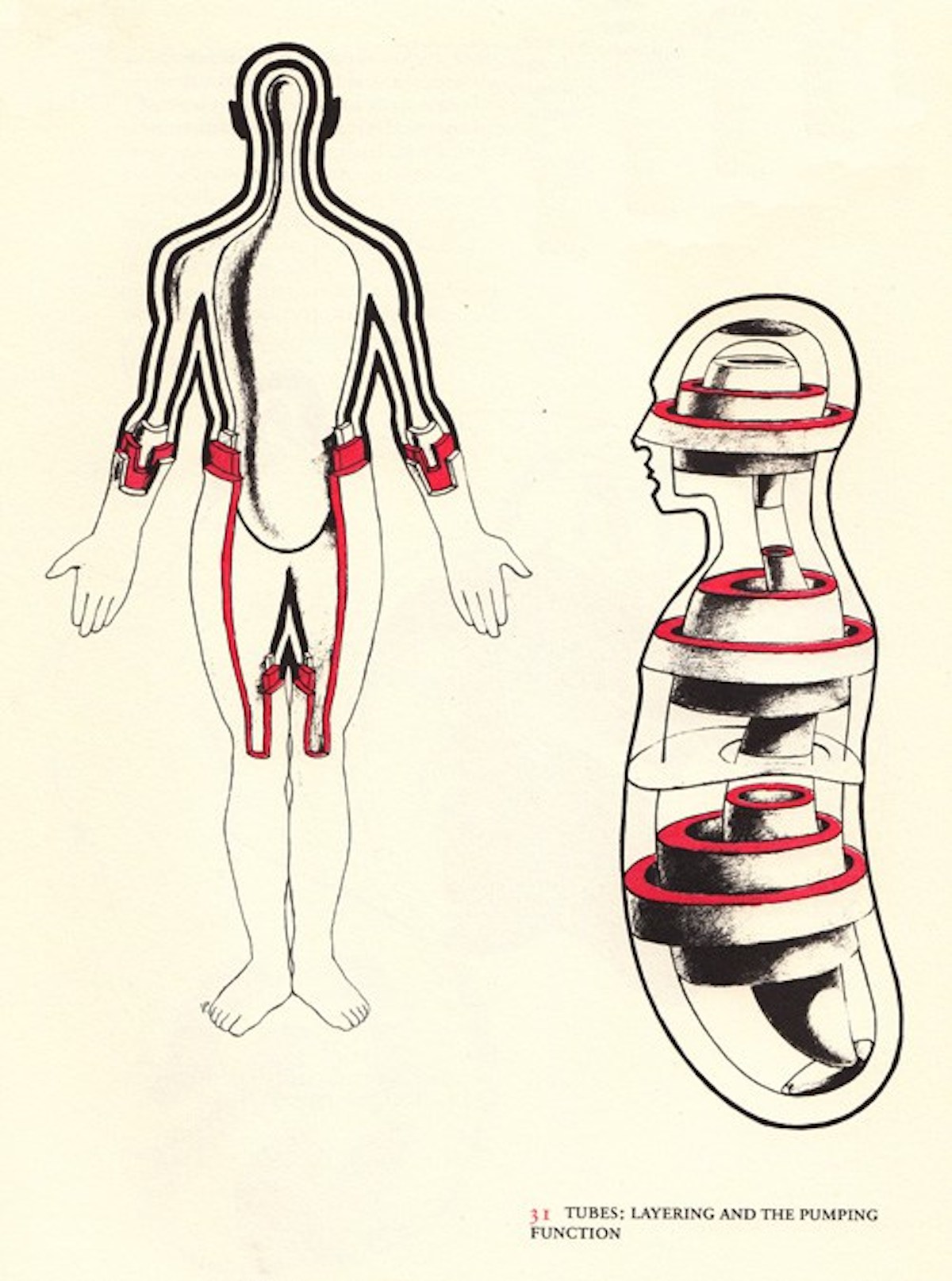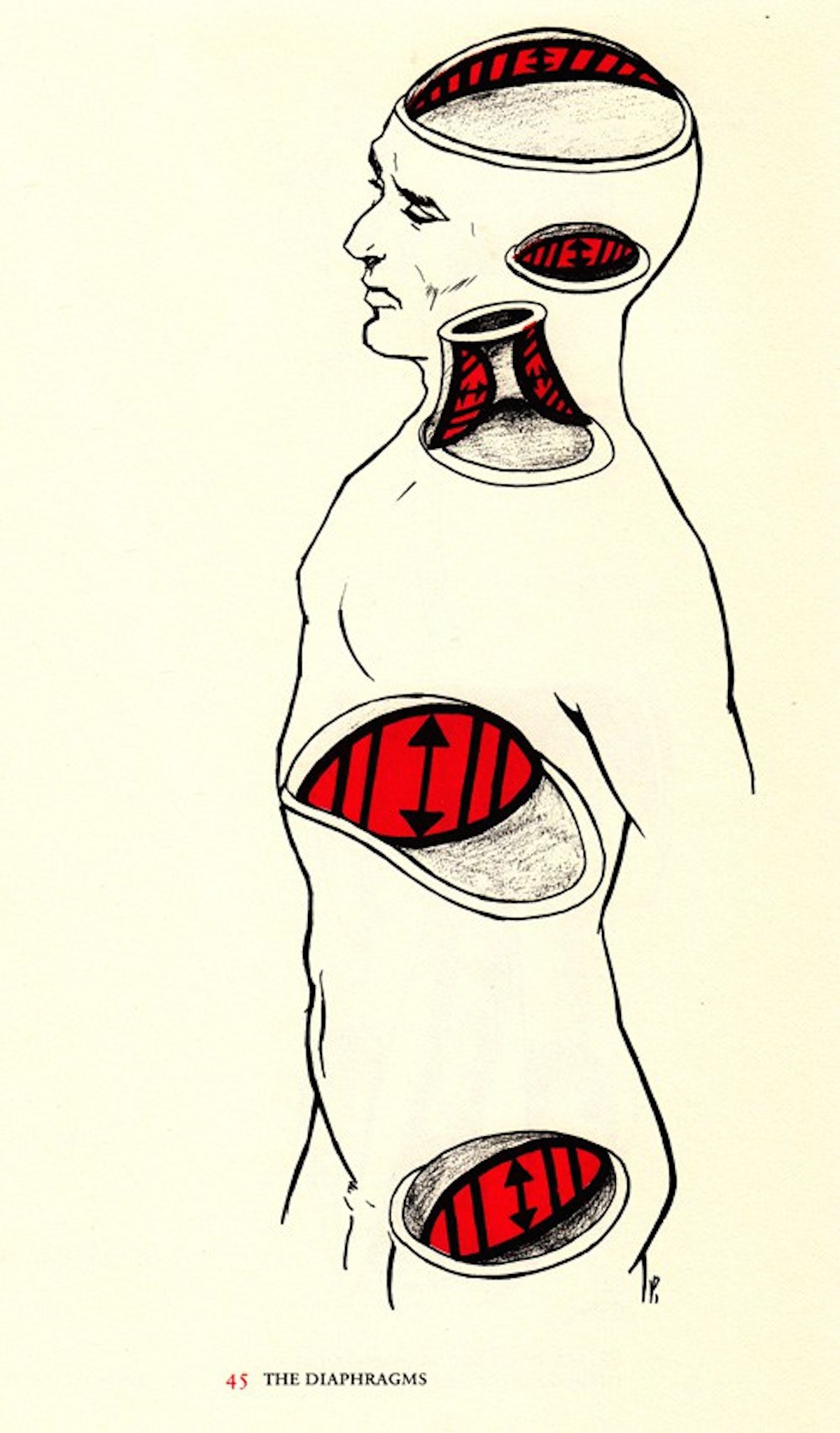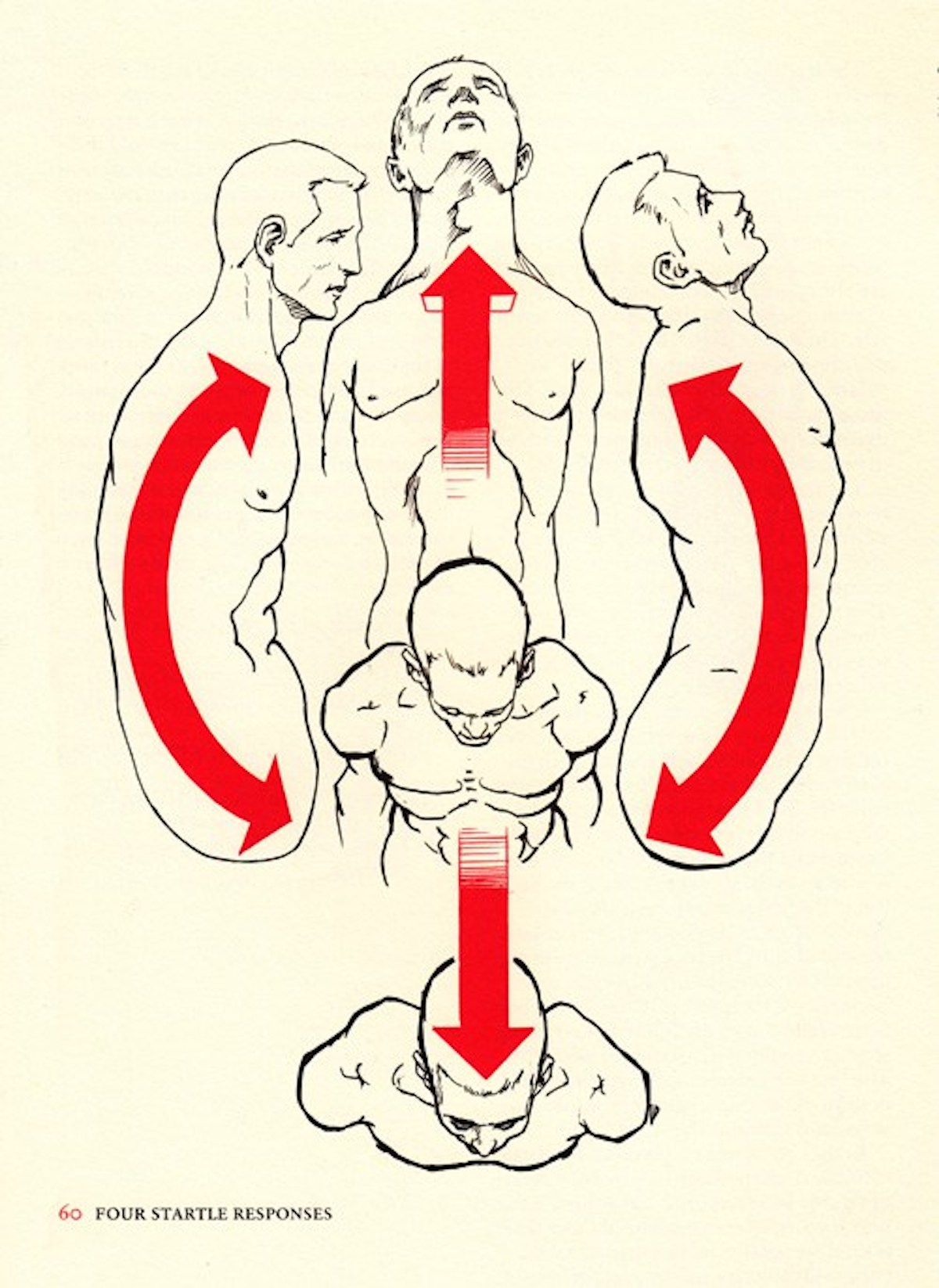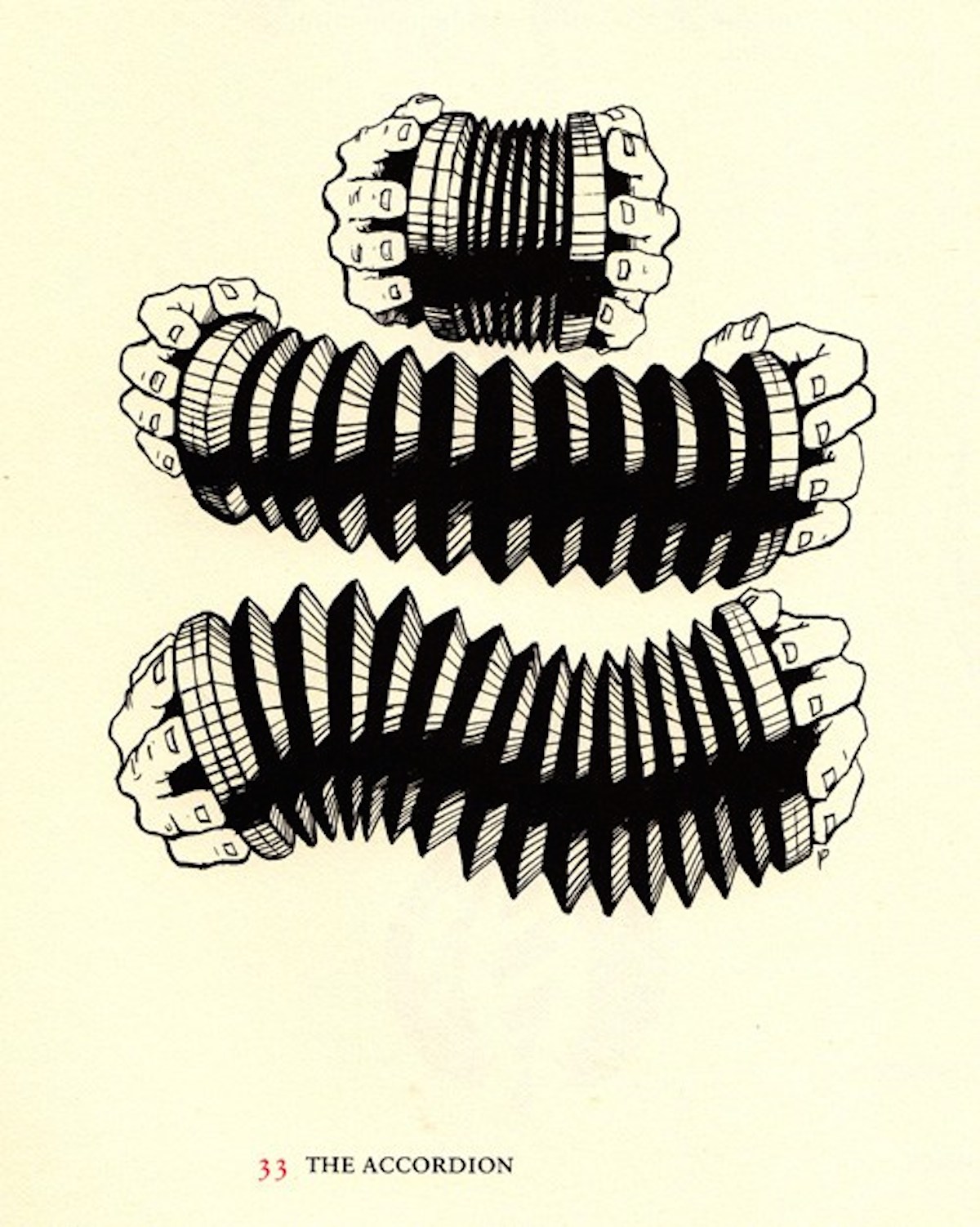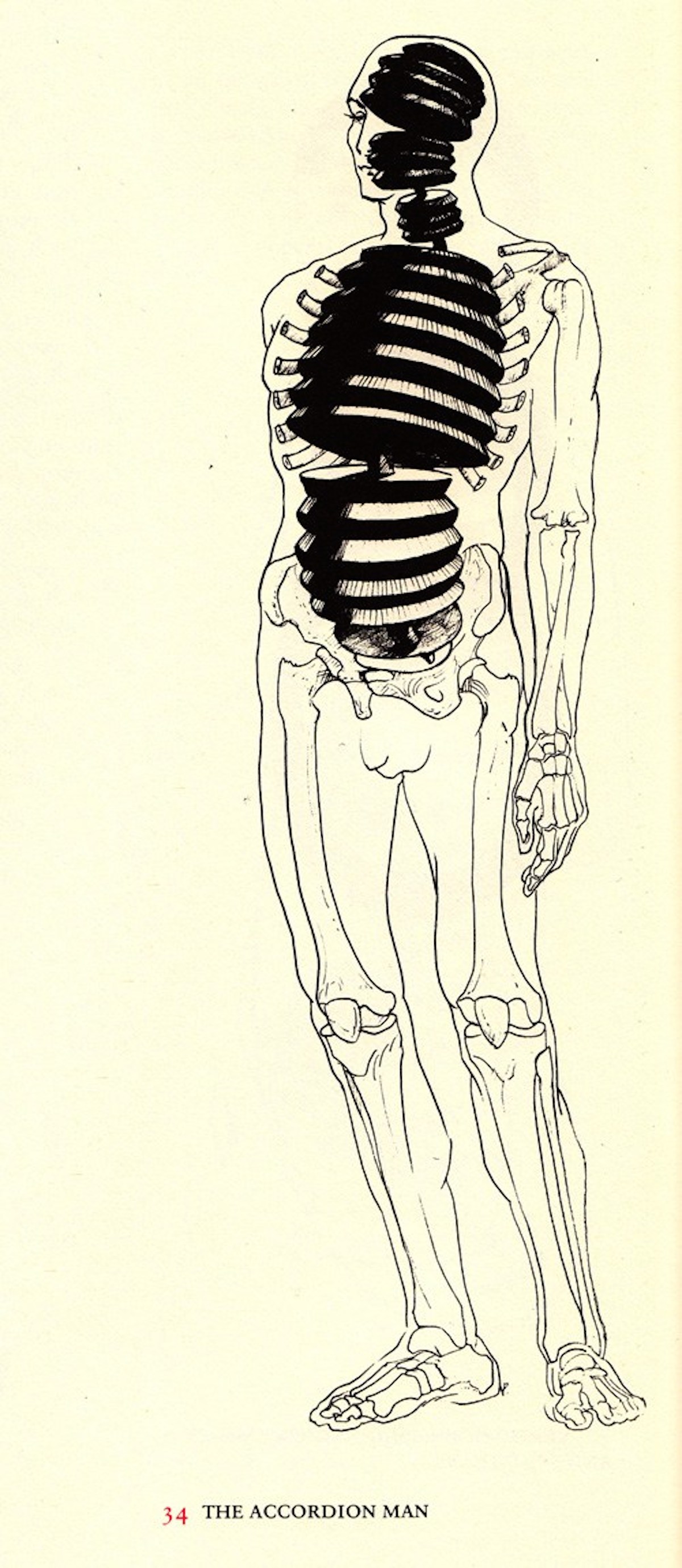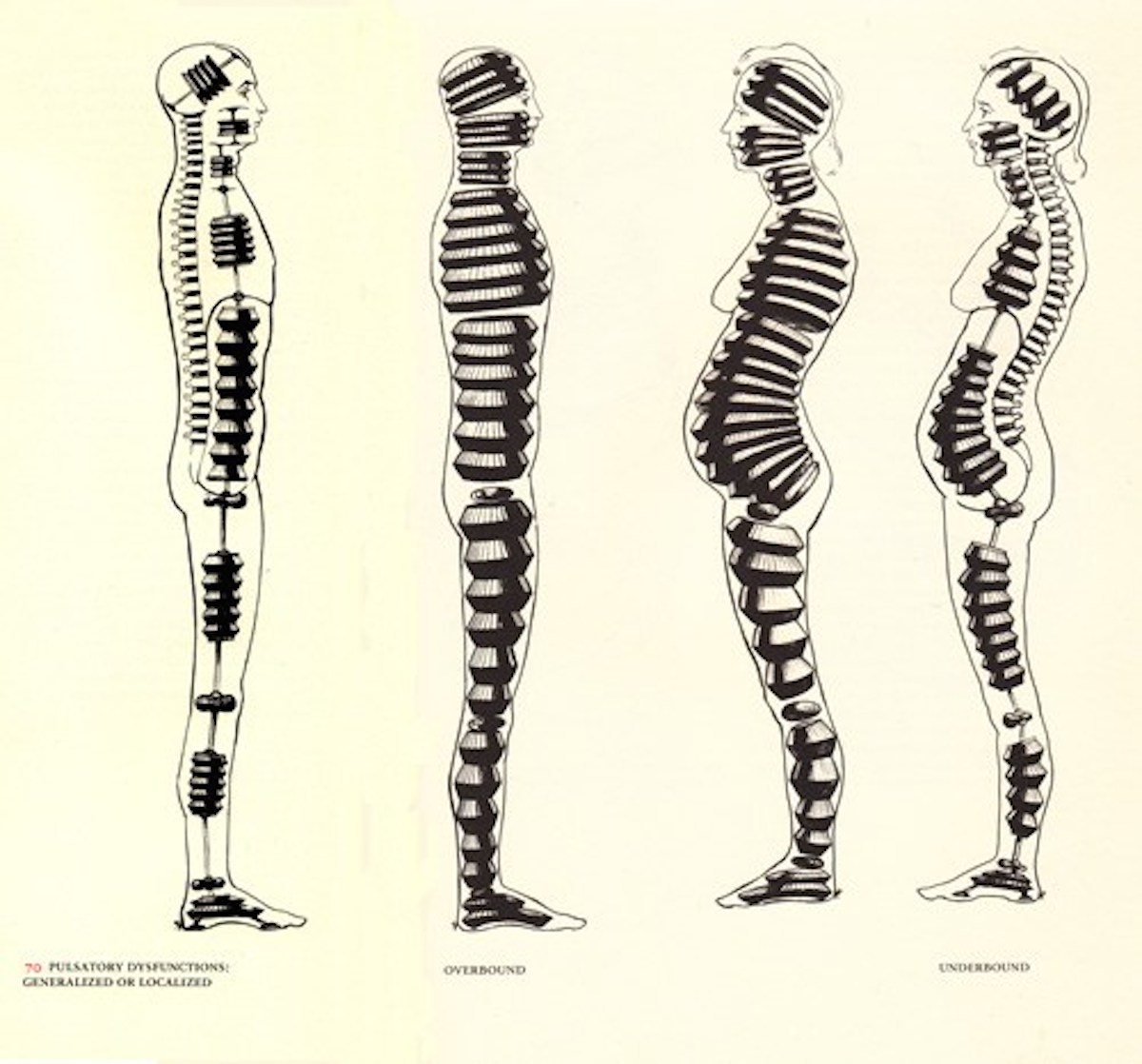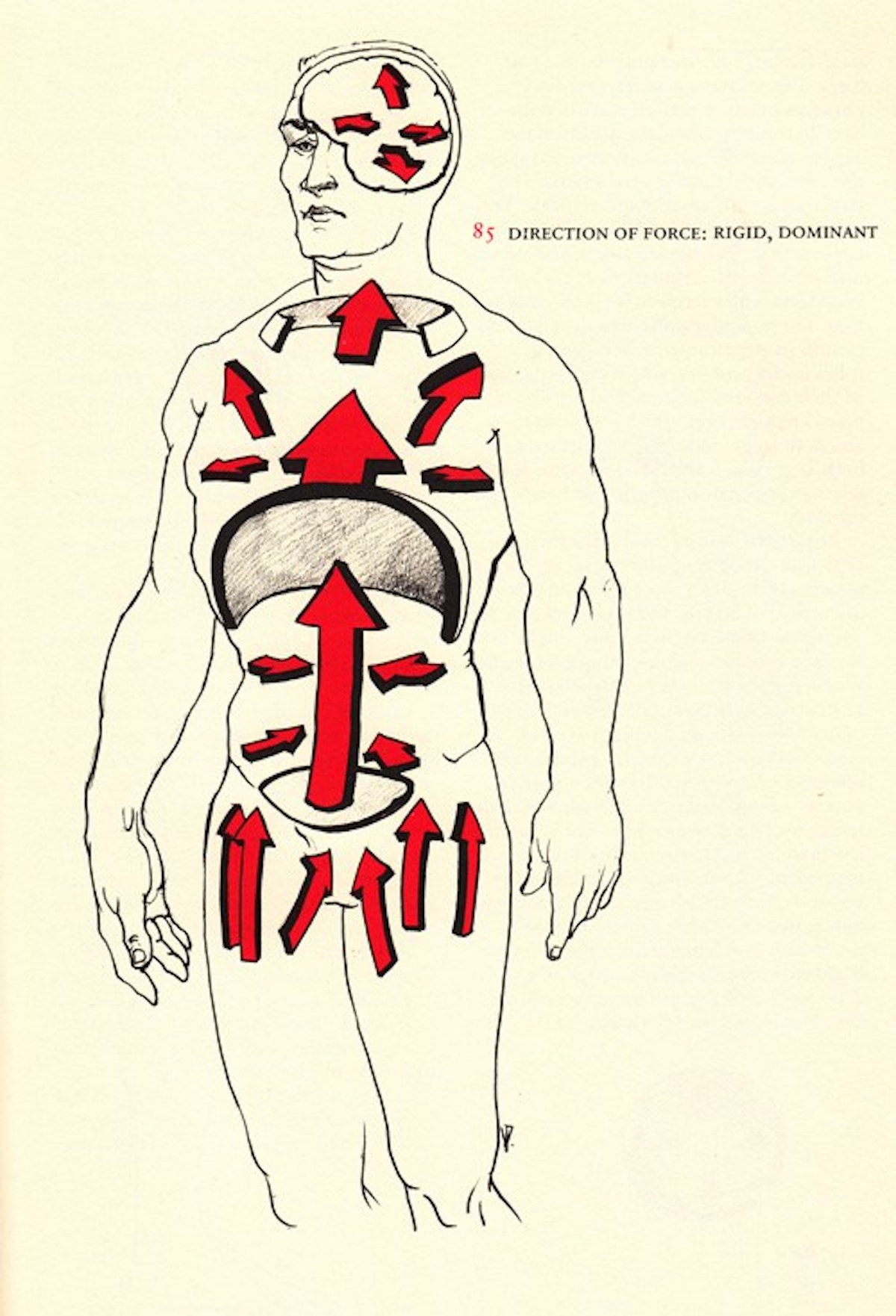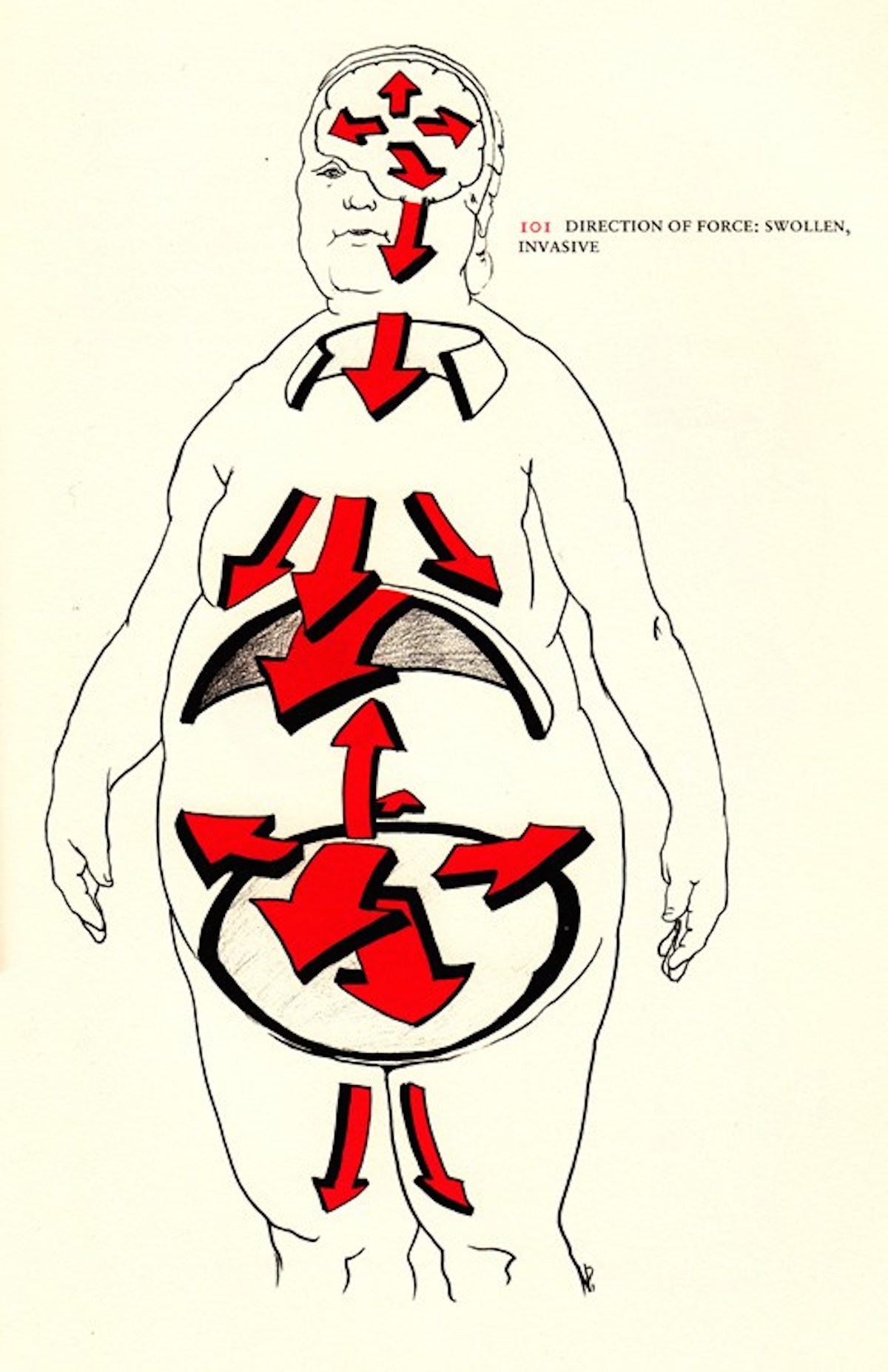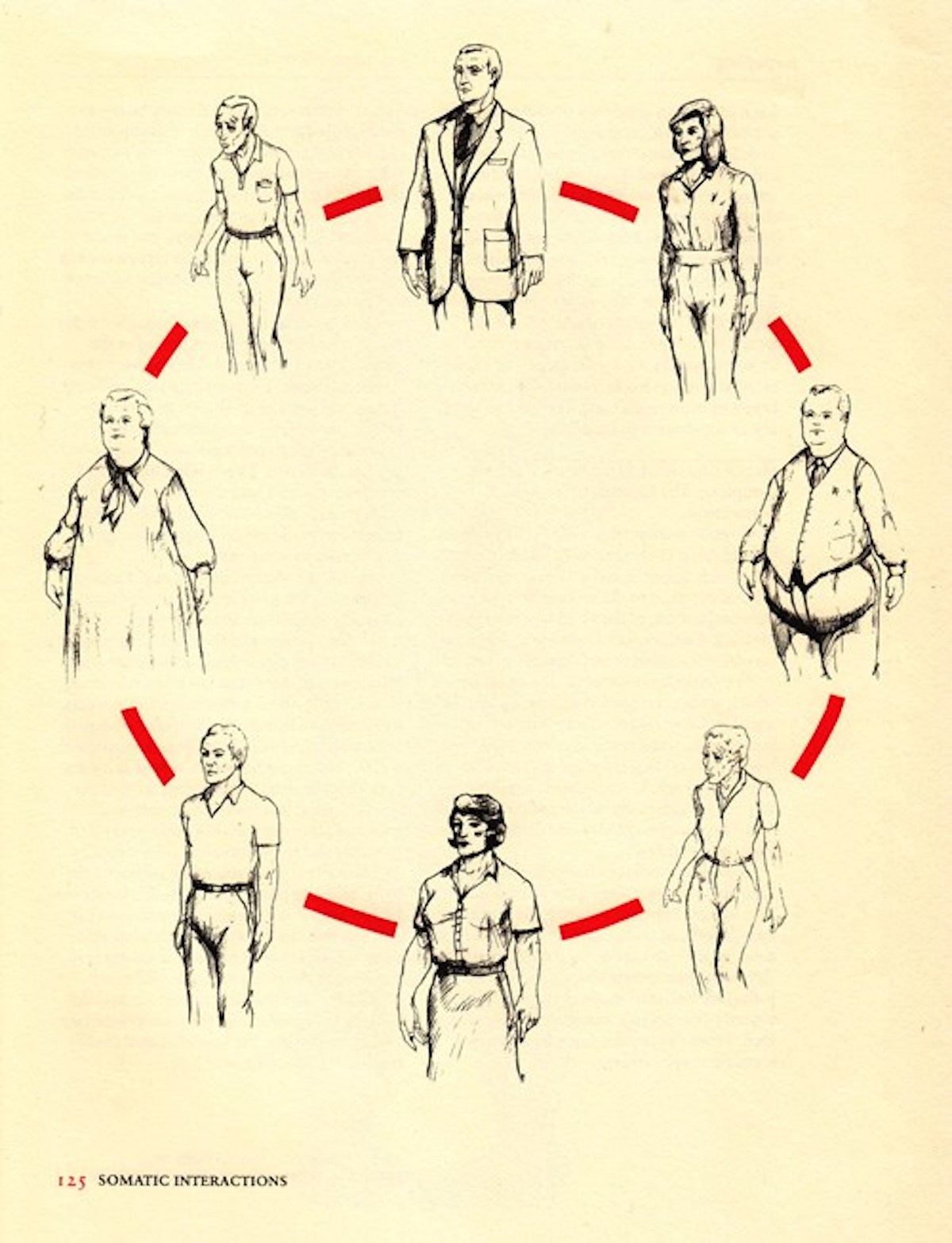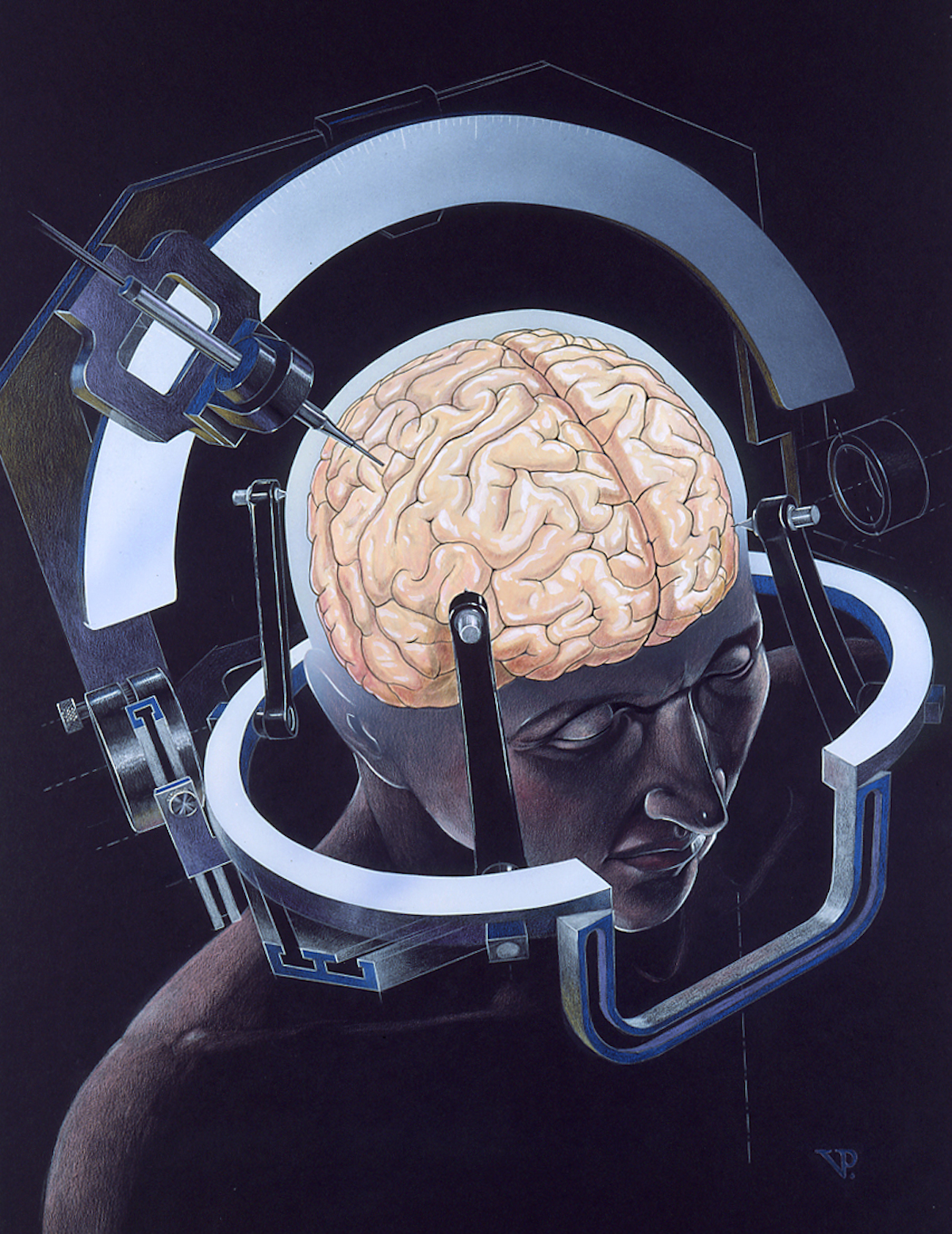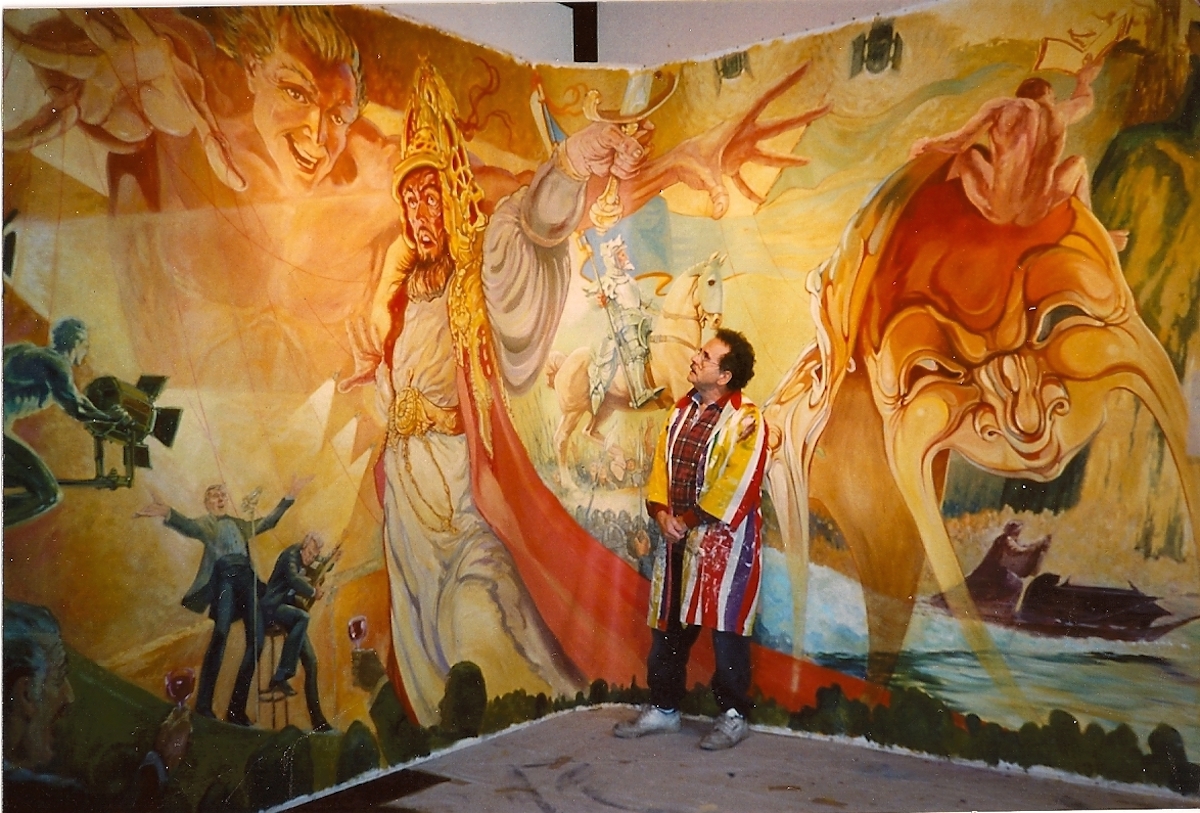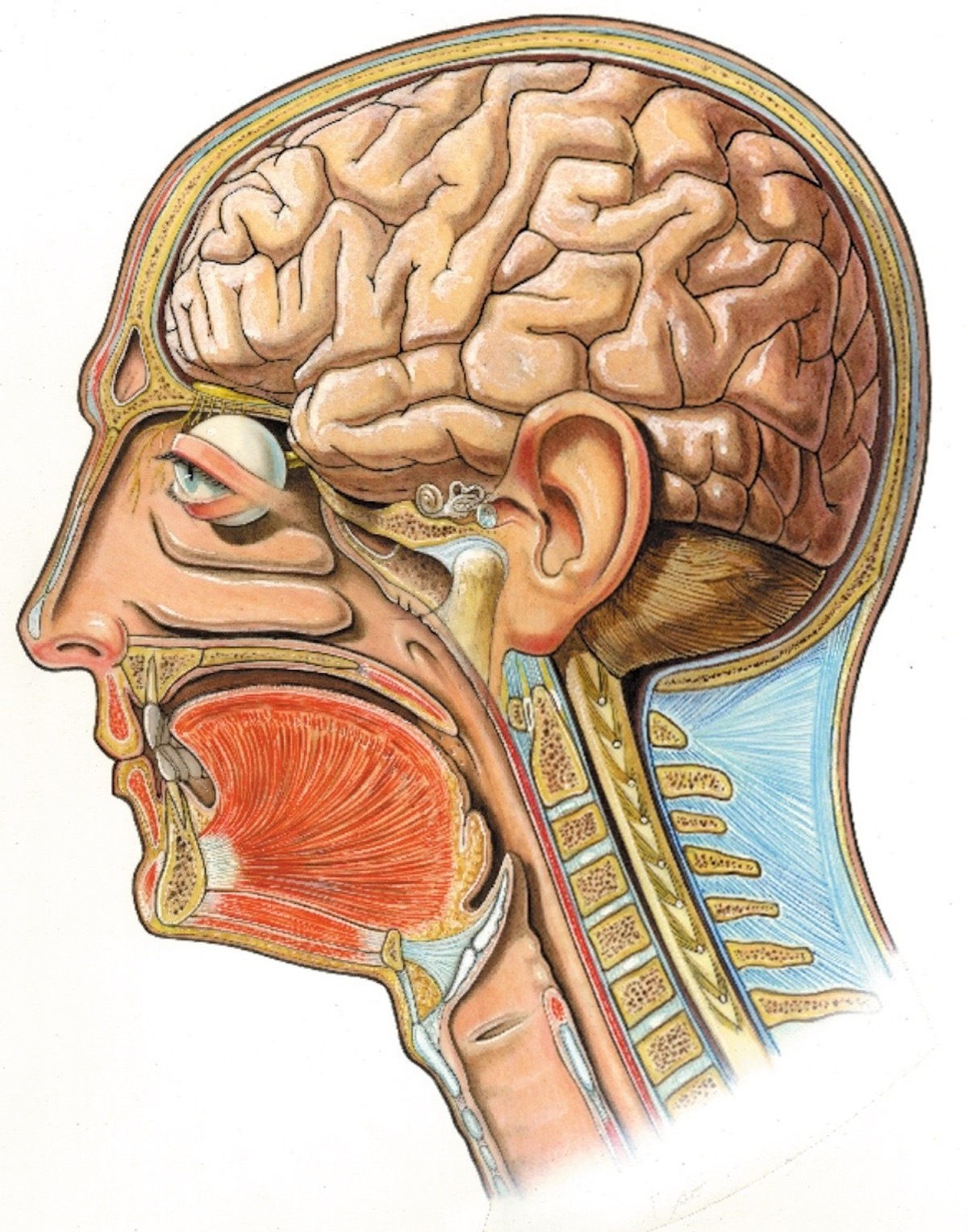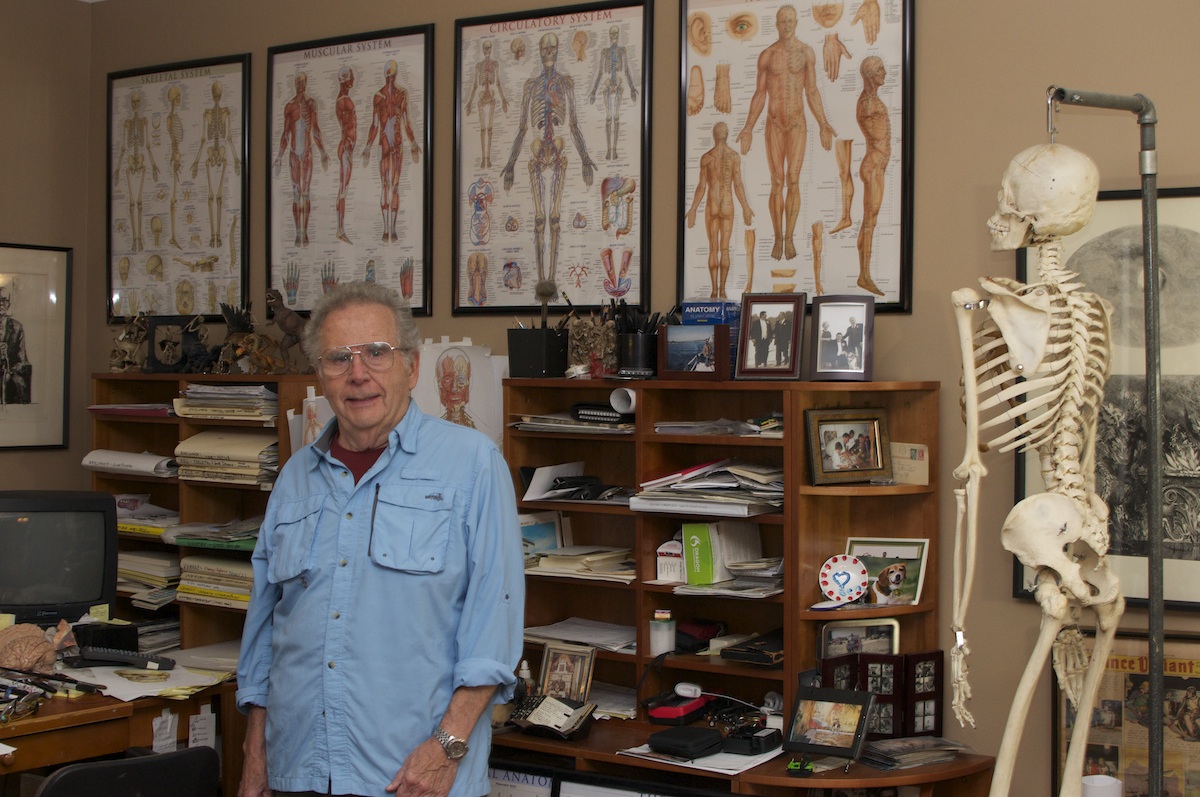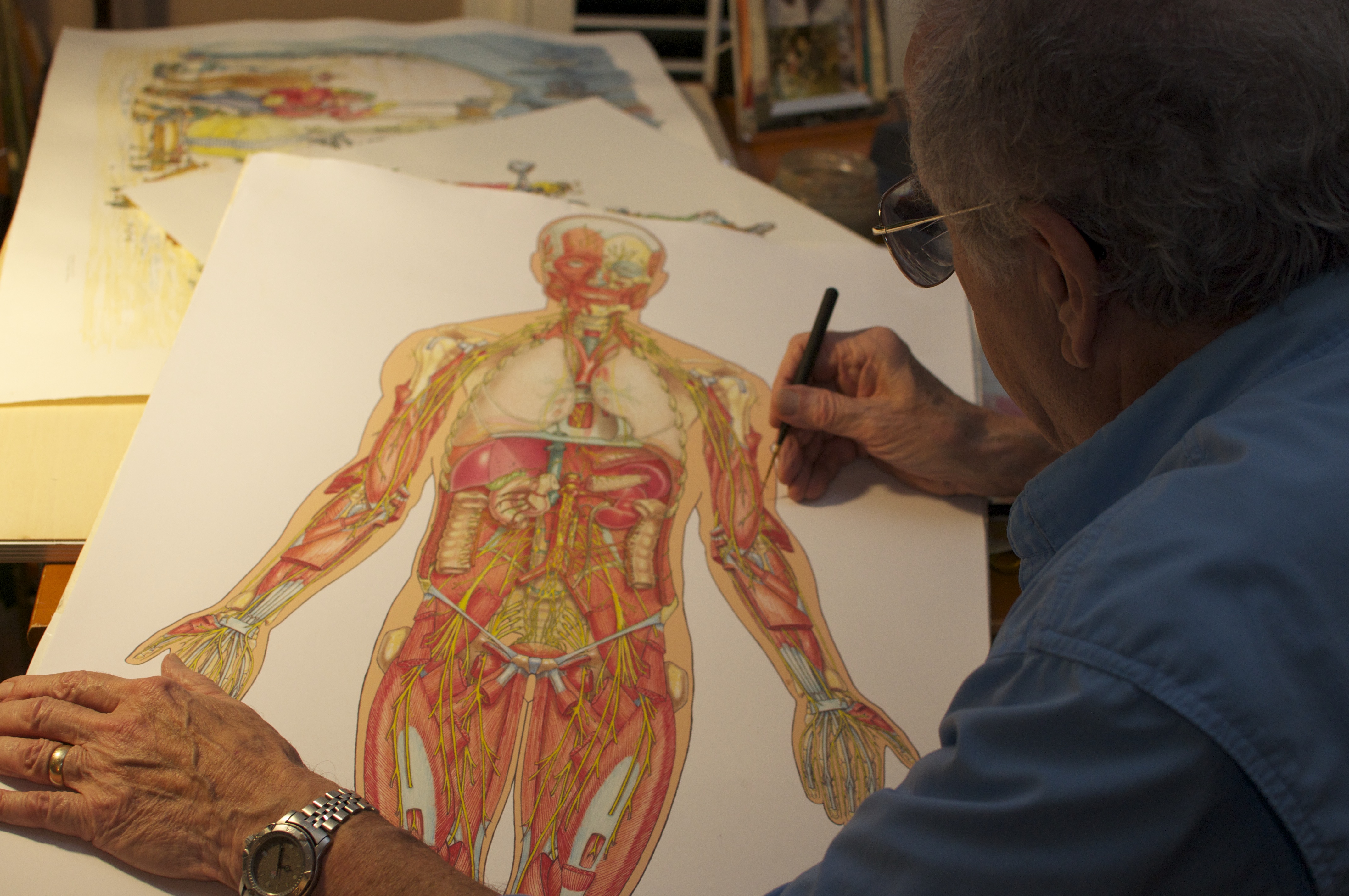Stanley Keleman’s Emotional Anatomy: The Structure of Experience (1985) maps “the geometry of somatic consciousness”. Keleman, director of Berkeley’s Center for Energetic Studies, explored the notion that the mind is connected to physical human shape. Your body speaks. This furthers the work of Frederick M. Alexander, founder of the Alexander Technique, who wrote in The Use of the Self (1932) on “the indivisible unity of the human organism”. It’s interesting stuff that illustrator and teacher Vincent Perez makes into something wonderful, depicting Keleman’s theorising in the most captivating, intricate and illuminating images, which you can see below:
Keleman’s approach to somatic therapy follows on naturally from the identity of attitude and form. Accordingly, our emotions and thoughts are intimately connected to our muscular gestures. Our postures and form, our mobility and motility recount our emotional and cognitive history. We therefore organise our own emotional and mental realities. And here is the nub of it; if we organise our realities, we can disorganise and reorganise our muscular emotional pattern. This then is the central feature of Keleman’s work today.
In Wilde’s ‘Dorian Gray’, we are told how by the age of forty, we get the face we deserve. And as I say to my Alexander pupils, by the age of forty we get the body we deserve! But Keleman shows us that we can participate in our own reforming.
‘The basic adventure of life is how a person organises the form of his own existence, disorganises what is no longer relevant, and generates new experiences to become the person that he lives and not the person that he imagines he has to be.’ (Keleman, 1989)
As we face the world we are upright. The soft front of the body is exposed. We are prepared to move out of ourselves into the world or from the world into ourselves. Insults temporarily invoke the startle reflex; it may be perpetuated as stress. Uprightness and our move toward the world is interrupted. We attempt to preserve our humanity by defending ourselves.
We are programmed with the startle reflex, a series of alarm responses lying along a continuum. The startle reflex begins with the investigative response, followed by assertion, then an annoyance reaction, then anger or avoidance, and, finally, submission and collapse. If the first response alleviates the insult, the event that interrupts us, the organism returns to homeostasis. If not, the first response can invoke the second, the second lead to the third, and so on. In cases of severe threat, the early stages of startle are by-passed and we jump immediately to a more extreme response. Yet the continuum of startle responses does not necessarily occur in an invariable order; neither are the steps sequential. One or several steps could be by-passed.
– Keleman (via)
In addition to his terrific work with Keleman, Vince has sent us “some of my lecture drawings that I produced in front of my Anatomy students at California College of Art, where I received a Professor Emeritus when I retired. I did about 50,000 of them over a 40 year span.” Below are some of Vince’s other illustrations, and photos of him at work. Vince counts Time, Disney, LucasFilm, Roche and the Arion Press among his clients. His work can be found in the Museum of Modern Art and the Legion of Honor in San Francisco, the National Gallery in Washington D.C., and the Vatican in Rome.
In Atlas of Human Anatomy and on his site you can see more of Vince’s terrific work.
Would you like to support Flashbak?
Please consider making a donation to our site. We don't want to rely on ads to bring you the best of visual culture. You can also support us by signing up to our Mailing List. And you can also follow us on Facebook, Instagram and Twitter. For great art and culture delivered to your door, visit our shop.
